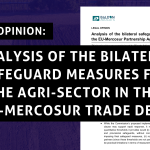BLOG POST
No doubt that 2021 leaves another mark in people’s commemoration that the climate crisis is no longer abstract science, it has become very real and even life threatening in every corner of the Earth: horrifying wild and forest fires in the Northern hemisphere in Yakutia (Russia), California (USA); a devastating Pacific Northwest heatwave in North America, tropical cyclones Tauktae and Yaas in South Asia, catastrophic flooding in China a late summer heatwave causing massive melt of the Greenland ice shield, droughts in Kenya and Syria, tropical cyclone Dante in the Philippines. But the people and ecosystems in Europe and its neighbourhoods have been no exception, with devastating floods in Germany, Netherlands, and Belgium, wildfires in countries such as Turkey, Greece and Spain. 2021 has clearly confirmed that “climate change is already affecting every inhabited region across the globe”, according to the recent IPCC report.
UNFCCC COP26 must leverage greater climate action
After the COVID-induced break of physical climate negotiations in the UNFCCC, the COP26 is now around the corner, taking place with one year delay in Glasgow, Scotland, from 31 October to 12 November. The UNFCCC process as a consensus-based process among all governments per se is not designed to correct all the failures, lack of climate action and dangerous inconsistencies in national climate policies (and in the speeches of national leaders), so this one COP will not ‘solve’ the climate problem, as previous COPs have not been able to do. But it has a key role to play, within the wider sphere of international policy moments and processes, to advance the finalisation of the Paris Agreement rulebook and strengthen its implementation architecture. And to generate attention of policymakers as well as media and the public, both globally and nationally, to the continuously large gaps between the required actions, and which policies have been put on the table so far.
Unfortunately, these gaps are no news but have been exposed and highlighted over and over again. This particular article in preparation of the COP26 will focus on the aspects of emission reductions, and what the EU in particular needs to do in the context of the conference. Two editions (one in February and an update in September) of the UNFCCC synthesis report on Nationally Determined Contributions (NDCs), the key national instruments under the Paris Agreement, have shown that the world is by far off track to meet the 1.5°C limit enshrined in the Paris Agreement, even though the gap has been reduced through announcements of some major countries. But we are still heading towards an increase well above 2°C, with dangerous potential consequences for today’s generations as well as future ones.
EU’s domestic ambition: not in line with 1.5°C
The EU’s positions for COP26 must ensure that the EU and each of its Member States get behind a political outcome at COP26 that advances a fair approach to 1.5°C (#FairFor1Point5). COP26 must move us beyond a 1.5°C rhetoric and must result in concrete actions as well as negotiation outcomes that strengthen the Paris Agreement’s implementation architecture. It must respond to the urgency for action outlined in recent IPCC reports and the UNFCCC NDC Synthesis report and address the clear emissions, adaptation and finance gaps, laying out a pathway to bridge them. It must also ensure that any rules agreed under the Paris Agreement uphold environmental and social integrity to progress towards and keep the 1.5°C limit within reach.
A key starting point to increase mitigation ambition is the EU’s domestic ambition. While CAN Europe supports the narrative of “keeping 1.5°C within reach”, we stress that the EU’s own ambition of “at least 55% net emission reductions by 2030” is not sufficient for a fair approach to 1.5°C pathways. This has, again, been reiterated by a recent report published by the think tank consortium Climate Action Tracker, which concluded that “the EU’s climate action still leaves room for improvement, especially around the acceleration of the coal phase-out, increasing finance for climate action abroad and going beyond the current 55% by 2030 emissions reduction goal.” A report by Climate Analytics “1.5°C Pathways for Europe: Achieving the highest plausible climate ambition”, examines 1.5°C compatible climate scenarios, deriving a set of emission reduction and energy mix pathways for the EU. Thus, the urgency to cut greenhouse gas emissions has never been greater and we get once again scientific evidence that the EU must go for a higher climate target. Putting all hands on deck and cutting emissions by at least 65% by 2030 – a long-held position by CAN Europe and its members – can avert the worst impacts of climate change. The EUshould front load action as far as possible within the next decade and avoid false solutions, including any significant reliance on offsets or negative emissions technologies, any support for or continuation of fossil fuel use, and which must be compatible with other sustainability co-benefits, including nature and biodiversity protection.
Raising ambition through the Global Stocktake (GST)
However, there are also specific negotiation outcomes which must drive further ambition to bring us on 1.5°C pathways. One key element is the so-called Global Stocktake (GST), a key element in the Paris Agreement’s long-term architecture. The first one is scheduled for 2023. The provisions in the EU Climate Law require setting a 2040 target required, based on the 2023 Global Stocktake, so there is a direct link between EU policy making and the international architecture. This would then also imply reviewing the reduction trajectory in light of the 1.5°C limit. Furthermore, the EU should promote a comprehensive and purpose-driven GST through advocating, as part of the main political decision at COP 26 (which is expected to be labelled after “1/CP.26”) for:
- Setting up the 2023 GST as a political ambition-raising moment reviewing implementation progress of the 2030 NDCs, as well as revisions of the 2030 targets in light of their inadequacy with regard to the 1.5°C limit based on enhanced NDCs submitted in time for the GST
- Extension of the Long-Term Strategies (LTS) mandate & calling for 1.5°C compatible mid-century net zero LTS
- Establishing a new political moment in 2022 for harvesting ambition before the GST
Beyond these 1/CP.26 priorities, the EU should recall the agreement among climate and environment ministers at the G20 meeting in July where members committed to submit new NDCs by COP26 and strongly urge all G20 members to deliver on this commitment.
Article 6: strong human rights principles and no carry-over
While agreeing on the implementation guidelines for Article 6 of the Paris Agreement is desirable, governments at the COP26 must only agree to those if they ensure that governments will avoid all forms of double counting of emission reductions, adopt safeguards, ensure the protection of human rights and the rights of Indigenous Peoples, and phase out Kyoto Protocol flexible mechanisms. CAN welcomes the San Jose Principles as a floor of necessary safeguards and principles for both discussions at the virtual SB and a possible outcome at COP26, but highlights the importance of updating these principles to include a reference to the need to respect and promote Human Rights. We urge the EU to strongly back these principles. The EU has indicated strong support for increased ambition from Article 6 mechanisms, for avoiding double-counting inter alia through the application of corresponding adjustments, and closure of the Kyoto mechanisms. However, we stress the need for:
- Strong reference to human rights principles as key safeguards
- Clear positioning against any carry-over of credits from Kyoto mechanisms
- Support for Art. 6 to channel a share of proceeds into the Adaptation Fund
- Support for a mandatory automatic partial cancelation rate to deliver an overall reduction in emissions
Five Year Common Time Frames
Parties need to achieve a consensus at COP26 with a single 5-year common time frame for NDCs implementation at its core. The EU has for long been resisting this, given its own legal architecture is oriented towards 10-year time frames. However, following constant pressure from other countries and civil society, the recent October 2021 EU environment minister council paved the way for the EU no longer standing in the way of a single, 5-year implementation time frame. In CAN’s view this allows Parties to adapt and adjust their domestic climate action with the five-year heartbeat of the Paris Agreement. We also regard this as fully compatible with the EU’s climate and energy policy framework, including the European Climate Law.
The EU must now fully join forces with those developing countries already explicitly supporting a 5-year time frame as one ingredient to more rapidly increasing mitigation ambition. But it should also bring in its diplomatic force to make this part of the dialogues with other G20 countries who have not yet explicitly supported a 5-year approach, which nevertheless need to do so to find an overall agreement, such as China or India.
Finally, a COP is also a moment to take further unilateral and multilateral measures, which do not necessarily reflect a consensus of all Parties, but self-commitments of groups of countries. The EU and its member states should align with, and sign up to such initiatives. One recent example, which is expected to further grow by COP26, is the Beyond Oil and Gas Alliance. In addition, getting the finance right will be one key measure to make COP26 a big step in consigning fossil fuels to history.



